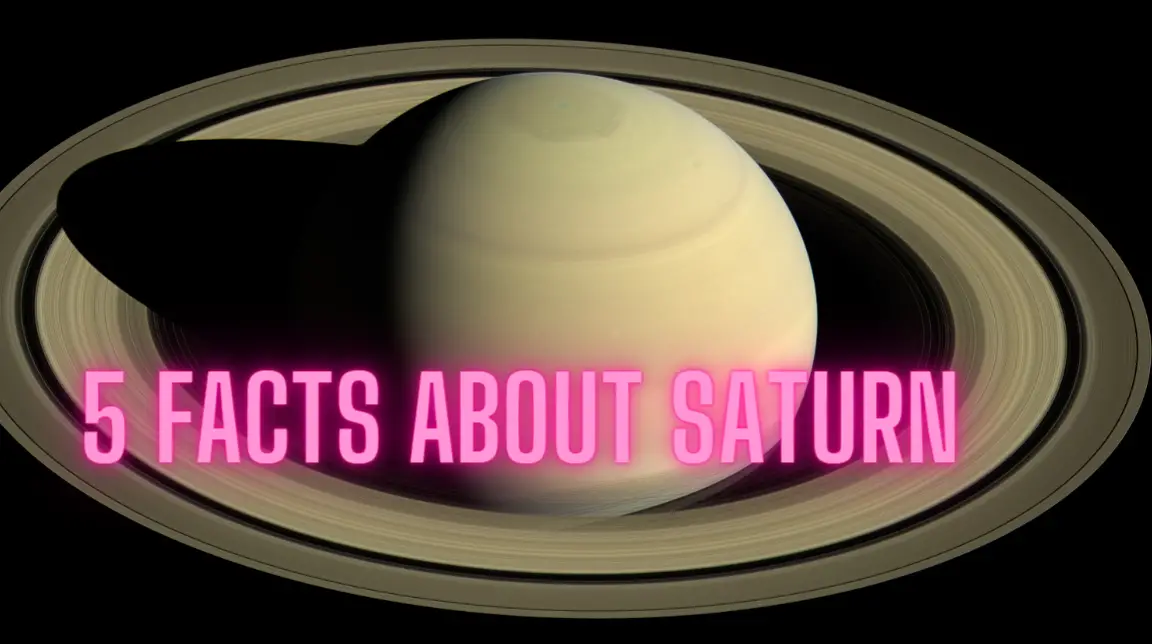Saturn, which is the sixth planet from the sun and the second-largest planet in our solar system, has always been a topic of amazement and curiosity. Saturn is a particularly stunning celestial body because of the fascinating rings it possesses and the singular qualities it have overall. Here are five fascinating tidbits of information on this amazing gas giant:
1. Spectacular Ring System
One of Saturn’s most distinguishing characteristics is its breathtaking ring system, which is also one of the planet’s most famous features. These rings revolve around the equator of Saturn and are predominantly made up of ice particles ranging in size from minuscule grains to massive boulders. They have a diameter of up to 175,000 miles (282,000 kilometers), yet their thickness is just approximately 30 feet (10 meters) at its thickest point. Scientists believe that Saturn’s rings may have developed from the fragments of a moon that was smashed into rings as a result of a collision or tidal forces; nevertheless, the exact origin of Saturn’s rings is still a mystery.
2. Mysterious Hexagonal Storm
Hexagonal Storm, a phenomena Steeped in Mysterious Circumstances Saturn is home to a remarkable meteorological phenomena known as the “hexagonal storm.” This huge storm system generates a perfect hexagonal pattern on the planet’s north pole, as seen in this image from the Cassini mission operated by NASA. The enormous cloud formation known as the hexagon has a diameter of around 20,000 miles (32,000 kilometers) and is accompanied by winds that can reach speeds of up to 200 miles per hour (322 kilometers per hour). Even while researchers are still trying to determine the precise reason for this phenomena, they have a strong suspicion that the hexagon is the result of the rapid rotation of the planet in combination with the dynamics of its atmosphere.
3. Moon Paradise
Saturn is home to an extraordinary retinue of moons, with over 80 verified satellites orbiting the planet in its system. Saturn is known as the “Moon Paradise.” Titan, Saturn’s largest moon, stands out as an interesting world all to itself among these other moons of Saturn. Titan is the only moon in our solar system known to have a dense atmosphere, and it is also the largest moon in our solar system, being larger than the planet Mercury. Even though it is made of liquid methane and ethane rather than water, it has lakes, rivers, and even rainfall on its surface. Titan’s peculiar environments have piqued the curiosity of researchers, who are currently investigating the moon in the hopes of gaining new knowledge about the early environment of Earth and the existence of life in other parts of the cosmos.
4. Rapid Rotation
Rapid Rotation Saturn is well-known for having a rapid rotational speed, as it only takes roughly 10.7 hours for the planet to complete one full rotation on its axis. The planet Saturn has an oblate form as a result of its rapid rotation, which causes the planet to bulge at its equator and become significantly flatter in its poles. The rapid spinning also causes strong winds to be generated in the atmosphere of the planet, which results in the formation of bands of clouds and storms in the planet’s outer layers.
5. Low Density
Saturn has a low density, which is unexpected given its massive size because it is extremely light. In point of fact, it is the planet in our solar system with the lowest average density, with a density that is lower than that of water. Saturn would float if there were a bathtub large enough to hold it. If only there were such a bathtub! This low density is a consequence of its composition, which is predominately made up of the gases hydrogen and helium. Saturn’s low density results in it having a comparatively small mass in comparison to other gas giants like Jupiter, despite the fact that it has an enormous volume.
Both scientists and stargazers continue to be enthralled by Saturn because of its hypnotic rings, unique weather patterns, and complex moon system. As we dive deeper into the mysteries of this fascinating planet, we are sure to uncover many more awe-inspiring discoveries that will further deepen our comprehension of the enormous and enthralling cosmos we inhabit. These revelations will help us better appreciate the world we live in.
![]()
